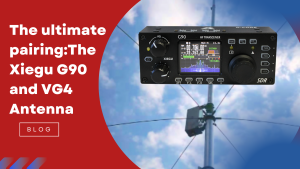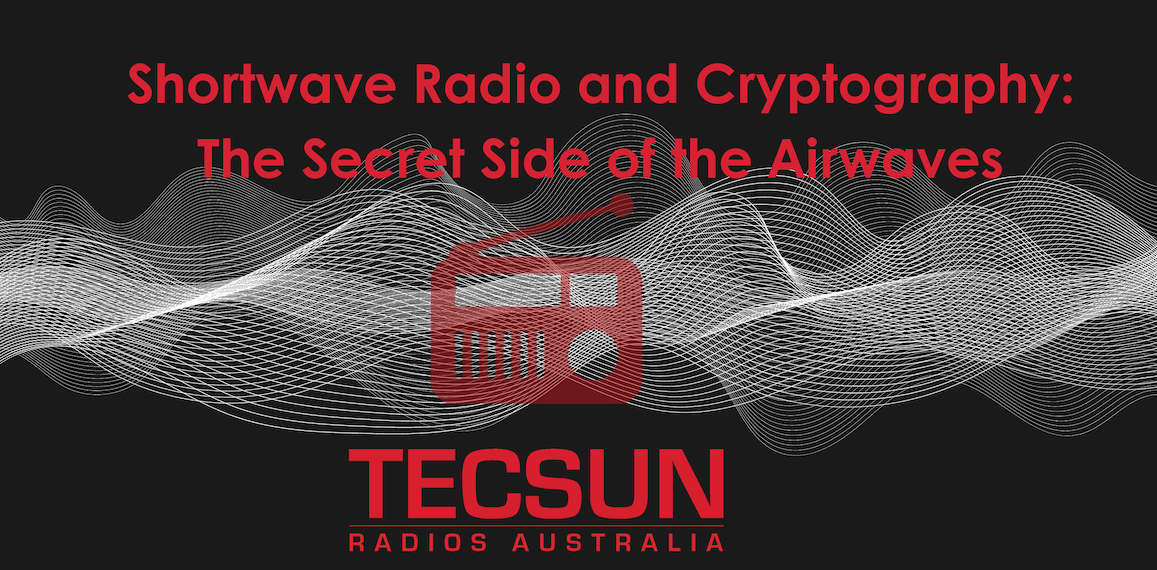
If you’re an amateur radio enthusiast looking to elevate your setup, there’s one combination that stands out: the Xiegu G90 HF SDR Transceiver and the Xiegu VG4 4-Band Ground Plane Antenna. Whether you’re chasing DX contacts or simply enjoying the art of radio communication, these two pieces of gear together offer an outstanding balance of performance, versatility, and sheer fun.
Why the Xiegu G90 is a Must-Have
The Xiegu G90 is an HF Software-Defined Radio (SDR) transceiver that has earned a stellar reputation among amateur radio operators. With 20 watts of output power, a built-in antenna tuner, and an adjustable 1.8-30 MHz frequency range, this compact rig punches well above its weight.
But don’t just take our word for it—one seasoned operator had this to say in a recent review:
“This review comes from experience. It started over nine years ago with the purchase of the Xiegu X1M 5-watt transceiver—well, it still goes well and it just spells fun! I’ve had quite a few contacts with this X1M Pro using portable antennas. Over time, I’ve built a collection of HF transceivers, and after extensive research, I decided to add the Xiegu G90 to my setup. What a bit of kit this thing is! It just blew me away with its lovely RX and TX audio.
Okay, it’s 20 watts—but so far, I’ve reached Japan, the USA, and ZL stations on 40m. It has put real fun back into DXing with a simple dipole! The performance is incredible. As an SWL (shortwave listener), it’s also just the ant’s pants in AM.”
It’s clear the G90 is a powerhouse, but to truly unlock its potential, you need the right antenna.
Enter the Xiegu VG4: The Ideal Match
The Xiegu VG4 4-Band Ground Plane Antenna is designed for 40m, 20m, 15m, and 10m amateur bands, making it an excellent match for the G90’s capabilities. Here’s why they’re a perfect pair:
Optimized Efficiency – The VG4’s parallel resonators ensure maximum vertical element efficiency, allowing for clear and strong transmissions.
Compact Yet Powerful – Despite its sub-8-metre length, this antenna packs a punch with 150 kHz bandwidth on 40m, 450 kHz on 20m, 800 kHz on 15m, and 1000 kHz on 10m.
Built to Last – With 304-grade stainless steel clamps, an anti-oxidation coating, and a design that withstands 35m/s winds, this antenna is as tough as they come.
Handles Serious Power – Rated at 1000 watts PEP (400W CW), it provides excellent power-handling capabilities for any serious operator.
A Classic Hobby, but better.
For many radio enthusiasts, amateur radio is more than just a pastime—it’s a tradition passed down through generations. If you remember watching your dad carefully tuning his rig and catching distant signals, you’ll appreciate how today’s technology has kept the magic alive while improving performance.
By pairing the Xiegu G90 with the VG4 antenna, you’re ensuring crystal-clear reception and transmission, letting you reach far beyond what you thought possible. Whether you’re reminiscing about your first DX contact or making new ones across the globe, this combination is guaranteed to deliver the best possible experience.
Ready to Upgrade Your Setup?
If you’re serious about amateur radio, don’t settle for second best. Pair your Xiegu G90 with the VG4 4-Band Ground Plane Antenna and experience the hobby like never before.
[Explore the Xiegu G90 & VG4 Today!] https://www.tecsunradios.com.au/store/product/xiegu-g90-transceiver/
https://www.tecsunradios.com.au/store/product/xiegu-vg4-hf-vertical-amateur-bands-antenna

Shortwave Radio and Cryptography: The Secret Side of the Airwaves
Shortwave radio is a fascinating medium that has connected people across the globe for decades. It’s not just a platform for international broadcasters, amateur operators, and hobbyists—it also has a history steeped in mystery and secrecy. Welcome to the hidden world where shortwave radio and cryptography intersect, revealing a legacy of coded wartime messages, enigmatic numbers stations, and the enduring allure of decoding the unknown.
Cryptography Over the Airwaves: A Brief History
Since World War I, governments worldwide have used shortwave radio to send encrypted messages to their operatives across the globe. The medium’s ability to cover vast distances with a relatively simple setup made it an ideal choice for clandestine communications. Correctly decoding these messages required possession of a one-time pad or codebook—a key that unlocked the seemingly random streams of letters and numbers.
During World War II, this technique became even more refined. Allied and Axis forces alike used shortwave transmissions to communicate with spies, resistance fighters, and military units. The famous Enigma machine, used by Nazi Germany, is a prime example of cryptographic innovation intersecting with shortwave radio. While the Enigma codes were famously broken by Alan Turing and his team at Bletchley Park, many other ciphers remained undeciphered, adding to the mystique of wartime shortwave cryptography.
Numbers Stations: The Enigma of Modern Cryptography
One of the most intriguing aspects of shortwave radio is the mysterious phenomenon of numbers stations. These stations transmit sequences of numbers, letters, or tones in an almost hypnotic repetition, often read by an automated or synthesized voice. Sometimes, Morse code or digital formats are used instead. Their purpose? To deliver secret instructions to intelligence operatives.
Governments from countries such as Cuba, Russia, North Korea, Israel, the USA, and even former nations like Czechoslovakia have been known to use numbers stations. These transmissions are nearly impossible to trace back to their origin, making them a highly secure and anonymous method of communication. All a recipient needs is a shortwave radio, knowledge of the transmission’s time and frequency, and the corresponding codebook to decipher the message.
Numbers stations are shrouded in mystery and have captivated shortwave enthusiasts for decades. Some of the most famous stations include the “Lincolnshire Poacher,” thought to originate from the UK, and “UVB-76,” a Russian station also known as “The Buzzer.” Their cryptic broadcasts continue to fascinate listeners, sparking countless theories and debates.
To dive deeper into this enigmatic world, don’t miss our dedicated blog on numbers stations, where we explore their history, notable examples, and why they remain relevant in the modern age.
Why Shortwave and Cryptography Endure
In an era dominated by digital communication, why do shortwave radio and cryptography still matter? The answer lies in their simplicity and resilience. Shortwave transmissions are hard to intercept and jam, and they don’t rely on internet infrastructure or modern technology. This makes them an excellent backup for covert communications and an enduring symbol of secrecy.
For enthusiasts, the thrill of decoding a hidden message or stumbling upon a mysterious broadcast adds an element of adventure to shortwave listening. It’s not just about hearing voices from distant lands; it’s about uncovering secrets and connecting with a part of history that’s both fascinating and elusive.
Tune In and Decode the Unknown
Shortwave radio’s intersection with cryptography is a reminder that the airwaves hold more than just music and news—they carry secrets, stories, and a legacy of ingenuity. Whether you’re a history buff, a cryptography enthusiast, or a curious listener, exploring this hidden side of shortwave radio is a journey worth taking.
Grab your shortwave receiver, tune in, and who knows? You might just stumble upon the next great mystery waiting to be decoded.

For the last 79 years, the Sydney to Hobart yacht race has been run on Boxing Day December 26.
This year the cannon will sound at 1pm, signalling the start of the race once again. The Rolex Sydney to Hobart yacht race commences on 26 December and ends on January 2 2025
This year there are 107 entrants racing over the 628 nautical mile course.
This is the first year where it is not mandatory for vessels to carry HF radio, although most still do. Radio supporters will no doubt wonder why the basic advantage of HF radio (you can be heard by anyone in an emergency) has been ignored and the cumbersome use of satellite phones and SMS instructions has been adopted. Official race instructions and updates will be sent by SMS to all vessels. Any vessel retiring from the race is expected to call a dedicated mobile phone number.
HF and shortwave radio enthusiasts can still listen to general marine communications by monitoring the following frequencies: 2182, 4125, 6215, 8291, 12290 and 16420Khz.
Weather forecasts for Tasmania at 1130 and 1530AEST (Bureau of Meteorology):
4426 kHz, 8176 kHz, 12365 kHz and 16546 kHz, USB at 1030, 1430 and 1830 AEST daily, 2201 kHz, 6507 kHz, 8176 kHz and 12365 kHz USB at 0230, 0630 and 2230 AEST daily.
Tasmanian maritime radio:
2524 kHz, 4146 kHz, and 6627 kHz USB at 0745, 1345, 1633 and 1903 AEST


